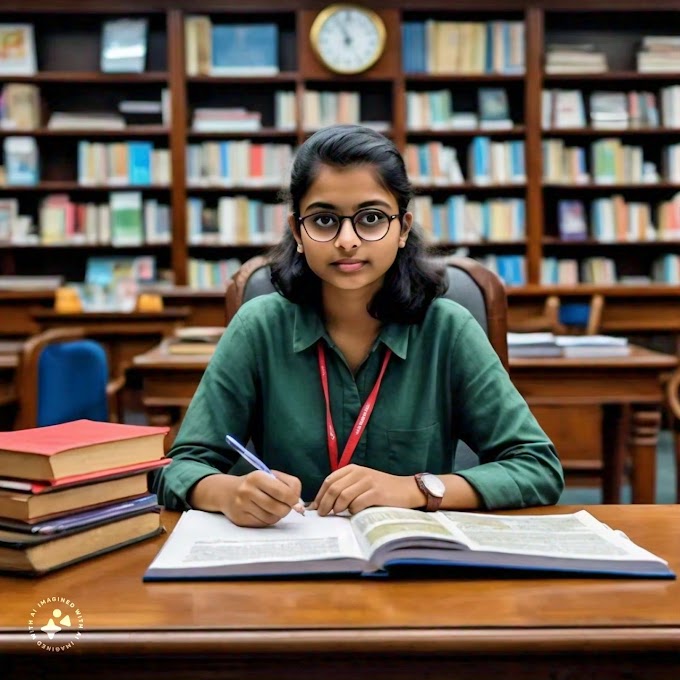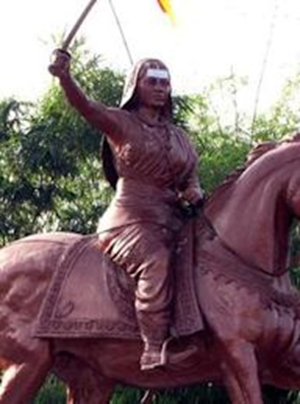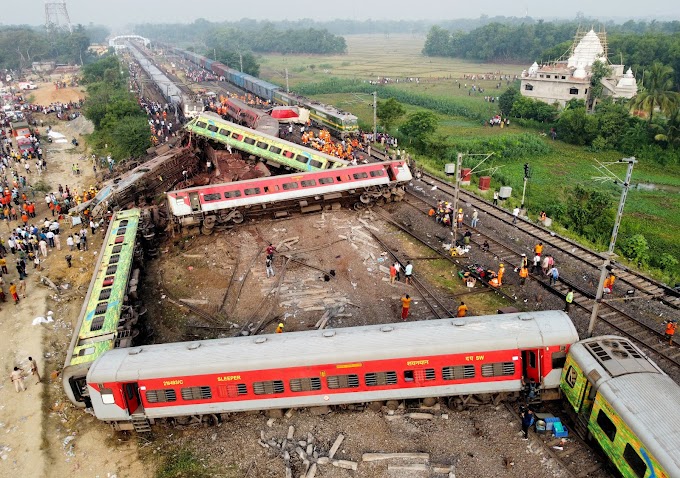Eduindex News
Domain is for Sale

Send mail to editor@eduperk.com
Followers
News Updates
random/feat-big
Search EDU Times
Archives
- May 2024105
- April 2024180
- March 202431
- February 202411
- January 202410
- December 202359
- November 20237
- October 202314
- September 202311
- August 202315
- July 20239
- June 202335
- May 202327
- April 202311
- March 202339
- February 202336
- January 202334
- December 202265
- November 202213
- October 202254
- September 202234
- August 202239
- July 202234
- June 202245
- May 202276
- April 202250
- March 20228
- February 20228
- January 202228
- December 202132
- November 202117
- October 20215
- September 20216
- August 202191
- July 2021910
- September 20201
- April 20191
- January 20191
Contributors
Follow Us
recent/hot-posts
Read more
Ads
Subscribe Now
Read More from eINDEX
- # "death with dignity"
- # #warrior #bravery
- # 74th Amendment # diversity
- # art #photography
- # BEST APPS
- # biography
- # colour
- # corona effect in India
- # culture
- # current affairs
- # depression
- # discipline
- # Festival #Happiness
- # finance #planning# education
- # finance #tax #education
- # fruits # health
- # gender equality
- # happiness #joy #peace
- # health #health care
- # healthy mind
- # india
- # indian diaspora
- # indian economy
- # indian railways
- # indian rupee
- # innovation #development
- # inspiration
- # motivation
- # mystery
- # pen #paper
- # president of india
- # reasons & solutions
- # say no to cruelty
- # science and technology
- # social reformer
- # stay happy
- # stay happy # stay positive
- # technology
- # Teenager # Depression
- # work place deviance
- # writing
- #1971War
- #1991 economic policies #aviation industry
- #2020
- #5g
- #7 stages
- #75yearofIndependence
- #AcademicDegree
- #acceptance
- #accident
- #achievements
- #Act
- #action
- #actionmovies
- #actors
- #adani
- #administration
- #administrative law #polity
- #Agni-V
- #agriculture
- #ai
- #aiming#police
- #alteration
- #anarchy
- #Animal # Cruelty
- #Anti asian
- #Anxiety
- #Apple
- #Argentina
- #article 370
- #artificialintelligence
- #asiacup
- #ATF
- #attention
- #autonomous areas #Constitution #sixth schedule
- #aviation
- #awareness
- #awarenesscampaign
- #babarazam
- #BangladeshWar
- #BCGMatrix
- #beaches
- #beauty
- #bees
- #believe
- #believe #strong
- #bementallystrong
- #benguluru
- #bhagavadgita
- #BharOS
- #bilateraltrade
- #bitcoin
- #blog
- #blogwriting
- #bollywood
- #bookreview
- #books
- #books #readingbook #nonfictionbooks #reading #booklovers#bookworm
- #BostonConsultingGroup
- #boyband #music #billboard
- #BPO
- #branding
- #bse
- #BSNL
- #BTS
- #budget
- #budgetfriendly
- #bullettrain
- #business
- #business #entreprise #outsourcing #specialisedagencies #bpo #kpo
- #businesssoftwares
- #camera
- #career
- #cars
- #casteism
- #CCI
- #center
- #centralbank
- #change
- #changesineconomy
- #cheetah
- #children
- #china
- #chips
- #choice #life
- #classical music
- #cleanindia
- #climate
- #constitution
- #constitution #india #soul
- #constitution #provision #education
- #constitutional bodies
- #construction
- #consumersright
- #consumption
- #Content
- #Content #lalitha writings
- #Content #lalitha writings #education
- #Content #lalitha writings #farmers
- #COP15
- #cost
- #courses
- #covid-19
- #covid19
- #CPI
- #cricket
- #cricketnews
- #crises
- #CSR
- #cuisine
- #cyberbullying
- #dailynews
- #dairyproducts
- #defence
- #demonetization # new perspective #education
- #DevelopedNations
- #developing world
- #development
- #DigitalPayments
- #directive principles of state policy #constitution #indian constitution
- #discovery
- #disinvestment
- #dollar
- #driving
- #drone
- #e-commerce
- #E-payments
- #e-rupi
- #earth
- #Eat healthy #stay fit
- #ecommerce
- #econimics #trade #freetradepolicy #import&export
- #economics
- #economy
- #economy #indian economy
- #ecosystems # save the environment #. ecosystems life
- #education
- #education #eduindex #learning #writs #typesofwrits
- #education #organizational behavior
- #education#knowledge
- #education#policies#evolution
- #educational
- #Educationforall
- #educationpolicy
- #eduindexnews
- #EIU
- #elearning
- #ellen degeneres
- #employee
- #employees
- #employement
- #entertainment #OTT #webseries # OTTplatforms #trends
- #entrepreneurship
- #environment
- #environment #protect environment #ozonelayer depletion
- #environment #sustainability
- #environmentallaw
- #equality
- #equipments
- #eRupee
- #export
- #FACT
- #famouspersonality#indianculture #yoga
- #farmers
- #fashion
- #FDI
- #fear#mental health #psychology #chronophobia
- #features
- #feelings
- #female
- #feminism
- #festiveseason
- #fiction
- #FIFA
- #fifaworldcup
- #films
- #finance
- #Finance #inventory
- #finance# retirement# education
- #fiscal #economy #indian economy
- #food
- #Forestman
- #forex
- #FOSSIL FUELS
- #foxconn
- #france
- #friends# work life balance
- #fruits
- #G20
- #gamers
- #Gaming
- #GDP
- #Generalscience
- #GEOPOLITICS
- #GHI
- #GIFT
- #Globe
- #Gold
- #goldatm
- #Government
- #GreenRevolution
- #growth
- #gujrat
- #Happiness
- #HDI
- #health
- #health habit # happy body and mind
- #health is wealth #stay healthy
- #healthministry
- #heat
- #heatwaves
- #hindicinema
- #history
- #history # culture
- #hobby
- #home
- #home space
- #honey bee
- #Hoochtragedy
- #horror
- #hostelissues
- #Hunger
- #Hurun500
- #hyderabad
- #IAF
- #IIBX
- #IITM
- #IMF
- #importance
- #important animal
- #IncredibleIndia
- #India# amazing facts
- #indian river
- #indianarmy
- #indiancinema
- #Indianeconomy
- #indiannavy
- #indianrupee
- #Indians
- #indiavspakistan
- #inequality
- #inflation
- #INR
- #insurance
- #INSVikrant
- #InternationalBullionExchange
- #internet
- #investment
- #IOT
- #isro
- #jaipur
- #job
- #jobs
- #journalism
- #journalist
- #journey
- #judiciary #india #parliament
- #kashmir
- #ketodiet#healthylife#healthylifestyle#stayfitstayhealthy#diet#fatlose#weightlose
- #kindness#self love # friendship # positivity
- #lalitha writings
- #land
- #law
- #layoff
- #layoffs
- #learning
- #life
- #lifeinsurance
- #lifestyle
- #loans
- #logistics
- #love
- #mahi #cricket
- #marketing
- #medical
- #medicine
- #meditation
- #Meghalaya
- #mental health
- #mental health # Prosophobia
- #mental health #awareness
- #metro
- #metrorail
- #Minority
- #money
- #moonlighting
- #mothertongue
- #motivation
- #motivation # inspiration # progeria
- #mountains
- #movies
- #MSME
- #Namjoon
- #NationalLogisticsPolicy
- #NationalSportsDay
- #NavIC
- #Navigation
- #NEOM
- #NEP
- #Netflix
- #NewEducationPolicy
- #news
- #news #business
- #NewZealand
- #NitinGadkari
- #NitinGadkari #Dairyfarming #KhadiPaint #CowDung
- #Noida
- #northkorea
- #novel
- #NSE
- #oil
- #oldeducationpolicy
- #onlinelearning
- #opportunitycosttheory #economics #internationaltrade #trading
- #os
- #Oscar
- #ozonelayer
- #pandemic
- #patriarchy
- #peace
- #pinkcity
- #pixel
- #plants
- #PLI
- #poem
- #politics
- #positivity
- #postpandemic
- #precaution
- #preciousmetals
- #PriceHike
- #promotion
- #protest
- #proverb #critical thinking
- #PSE
- #psychology
- #PTSD
- #racism
- #racism #race #discrimination
- #railways
- #rain
- #Rajasthan
- #rbi
- #reading#book review #friendship #kindness
- #realestate
- #recession
- #religiousfreedom
- #RENEWABLE ENERGY
- #Research
- #RESHUFFLE #MODIGOVT
- #RM
- #role of banks # financial inclusion #education
- #Role of GST # new perspective #education
- #rupee
- #RuralDevelopment
- #russia
- #SaaS
- #salaryhike
- #saudiarabia
- #scams#RBI#finance#Yes Bank
- #science
- #SDG
- #SDG-2
- #self help #therapy
- #self-help
- #selfrealization #selfdevelopment#
- #semiconductor
- #sensitivity
- #shakespeare
- #skills
- #sleep
- #smallscaleindustries
- #socialevolution #society #humanandevolution
- #socialissue
- #SocialResponsibility
- #sociology
- #software
- #solareclipse
- #solarenergy
- #space
- #sports
- #spritual
- #SSI
- #star wars # star trek # life lessons # space opera
- #startup
- #stay fit
- #stayhealthy #stayfit #breakfast
- #steel
- #stockmarket
- #stop cybercrime
- #stranger things
- #straydog
- #stress
- #student
- #students
- #study
- #summary
- #summer
- #sustainability
- #SustainableDevelopment
- #SustainableDevelopmentGoals
- #SWOT
- #teacher'sday
- #Teachers
- #teachersday #gratitude #Sarvepalliradhakrishna #respect.
- #techfirms
- #telecom
- #Television
- #tourism
- #trade
- #tradition
- #trai
- #travel
- #trending
- #trip
- #truth
- #TwinTowers
- #ugc
- #UK
- #Ukraine
- #underwatertunnel
- #unity
- #UPI
- #upsc
- #upskill
- #Us
- #usa
- #USD
- #vaccination
- #vaccine
- #VandeBharatExpress
- #VedantaGroup
- #village
- #viratkohli
- #war
- #wealth
- #webseries
- #westbengal
- #WhiteRevolution
- #who
- #women
- #women empowerment
- #women empowerment # motivation # Ashweeta Shetty
- #women empowerment # writing
- #work
- #work life balance #business # mental health # education
- #world
- #WPI
- #Writing
- #yoga
- #youth
- #YouTube
- #youtubemarketing
- #ZeroHunger
- 21st century
- 5 ways to improve website ranking
- 5G Networking
- 75th Independence Day
- a nation-builder
- a society-builder
- Abdul Kalam awards
- Abdul Kalam biography
- Academic
- Academic Organization
- Account Planning Software
- acting
- Advancement of Women
- Advancement of Women in India
- advantages of an online degree
- Advice
- Advisory to Parents
- Afforestation
- Afforestation and Its Benefits
- Africa
- Agri-SEZ Project
- Agriculture
- Air to Air Missile
- altcoins
- aml
- AMMUNITION
- Andragogy
- Android
- Animals
- ankur warikoo
- apartheid
- Art & Culture
- ART AND CULTURE
- arthritis
- Articles
- artificial intelligence
- Asia
- aspirant
- Assumptions
- Atomic Energy and Space
- Avaya Voice Solutions
- Awards
- banks
- beginnersguide
- benefits of computer
- Best course for students
- Best Jobs
- beta
- Bharat Biotech Campus
- Bhutan
- Bike
- bike riding
- bikers
- bill
- Biography
- biology
- Biology News
- Bitcoin
- Bitcoin Mining
- Bitcoin’s market
- Blinds
- Block Chain Technology
- Blockchain
- Blockchain Space
- BLOCKCHAIN TECHNOLOGY
- bloganuary
- bloganuary-2024-16
- bloganuary-2024-18
- bloganuary-2024-30
- blogger
- Blogging
- body shaming
- Book Publication
- book review
- book reviews
- Books
- Brahma Kumaris
- brain
- Buddha
- Buddha biography
- Buddhism
- Building Gender Parity
- business
- business ideas
- Business News
- buttered corn recipe
- Buying Cryptocurrency
- Call for Papers
- Canada
- Carbon Capture
- carbon-footprint
- career planning
- Career Service
- cars
- CAS
- Cat
- Center for Happiness
- certified wellness practitioner
- Chainlink
- Chandrayaan-3 Lunar Mission
- Chattered Accountant
- Chemical News
- chemicals
- Chola
- cinema
- CISCE
- Civil Disobedience Movement
- civil services
- Climate Change
- co-operation is the development of the country
- coaching
- Coal
- Coal Production
- Coal Stock
- coffee
- Colleges
- Comic books
- Commerce & Industry
- Comprehensive Guide
- computer
- Computer Games
- CONCLUSION
- Conference
- Conferences
- consent
- Consumer
- Consumer Protection
- Consumer Rights
- Content Creators
- Content Writing
- content-marketing
- Contribution of Red Cross
- Convocation
- Cooking
- cooperation
- Copywriting
- corn on the cob recipe
- Corporate Governance
- Courses
- cricket
- Cricket Cup
- Cricket News
- Cricket Tournaments
- Criticism
- Crypto
- Crypto Asset Management
- crypto assets.
- Crypto Exchanges
- Crypto Jargon
- Crypto Market
- Crypto Market Ecosystem
- Crypto Mining
- Crypto Payments
- Crypto Token
- Crypto Trading
- Crypto Trading Courses
- Crypto Tutorial for Beginners
- crypto-linked card
- Cryptocurrencies
- Cryptocurrency
- Cryptocurrency Market
- Cryptocurrency Markets
- Cryptocurrency Portfolio
- Cryptography
- CSR Professional Programme
- Culture and History
- Cultures
- Currency
- Current Affairs
- custom-products
- Cyber City
- dailyprompt
- dailyprompt-1819
- dailyprompt-1821
- dailyprompt-1833
- dailyprompt-1855
- dailyprompt-1856
- Dale Carnegie
- Data Analyst
- Data Protection
- Data Science
- Data Scientist
- Data Scientist Vs Data Analyst
- Dating Sites
- decentralization
- Decentralized
- Decentralized Finance
- Decision Making
- decor
- Defence Manufacturing
- DeFi
- Department of Scientific and Industrial Research
- Design
- Design Principle
- dessert
- desserts
- Dhokla
- Diagnosis
- Diary
- dieting
- DigiLocker
- DigiLocker Integration
- digital currency
- Digital Marketing
- dignity and decorum
- Diploma in Imaging and Radio Technology
- Disaster Resilient Infrastructure
- Disputes Redressal
- Distributed Computing
- diversification
- diversity
- dogecoin
- Don't give up on yourself!
- Drinking Water
- Dwarka Expressway
- Early Childhood Care
- Earth Hour
- earthday
- easy sweet corn recipe
- economic issue
- EconomicGrowth
- Economics
- Economy
- Ecosystem
- Editorial
- Education
- Education Policy
- Educational Courses
- Educational institutions
- Educational Network
- Educational News
- Educational News Channel
- Educational Portals
- Educational Sites
- Educational Websites
- Eduindex
- Eduindex eNews
- Eduindex News
- Eduindex Newspaper
- Edutimes
- Election News
- Electonic Media
- Elon Musk
- emissions
- Employment Exchange
- Empowering Women
- Energy
- entertainment
- Entrance Exams
- Entrepreneurship
- enviroment
- Environment
- Environment Day
- Environmental Impact Assessment
- Equality
- Ernest Hemingway
- esports
- Essays
- Estimates
- etfs
- ETHEREUM
- Europe
- Evolution of AI
- Examination results
- Examinations
- Examples of Automation
- Exams
- EXHIBITION
- Explanation
- Farming
- Father of nation
- feel-good
- Female Education
- Festivals
- Film and Cinemas
- Film Festival
- finance
- finance management
- fitness
- Floki
- Food Supply
- Forbes
- Foreign Relations
- Forests
- fresh corn recipe
- ftx
- Functionality
- Fundamental Analysis
- funding
- Future of AI
- Future of Cryptocurrency
- Future Plans
- Gadgets
- games
- gaming
- Gandhiji
- Garbage Free
- gardening
- gdpr
- General Election
- General Elections 2024
- geography
- Girl Child
- Girls Education
- Goa coast
- GOBARdhanm
- Godse
- Good American
- government law
- Government Schemes
- Governors Meeting
- Grants
- Graphic Design
- Green Energy
- Green world
- green-technology
- Gross Merchandise Value
- GST
- Guest Posts
- Gurugram
- Habits
- Hanuman Ashtak
- Hard Work
- hardware-wallet
- Health
- Health Care
- Health News
- healthcare
- healthy living
- Heat Related Illnesses
- herb-roasted corn recipe
- Higher Education
- higher studies
- History
- history of computer
- History of India
- Home Loan
- home-decor
- home-design
- home-improvement
- Horror
- Horse Racing
- horses
- hospitals
- Household Industries
- How to control it?
- how to perform CPR on a cat
- How to Win Friends and Influence People
- HUDA City Centre
- Human race
- Humanistic Approach
- Hyderabad
- Hyperloop
- ICAI
- ICMR
- ICMR 2023
- Idea
- IIIT Ranchi
- IIM
- IIM Ahmedabad
- IIM Amritsar
- IIM Andhra Pradesh
- IIM Bangalore
- IIM Bodh Gaya
- IIM Calcutta
- IIM Goa
- IIM Indore
- IIM Jammu
- IIM Kashipur
- IIM Kozhikode
- IIM Lucknow
- IIM Nagaland
- IIM Nagpur
- IIM Raipur
- IIM Ranchi
- IIM Rohtak
- IIM Sambalpur
- IIM Shillong
- IIM Sikkim
- IIM Sirmaur
- IIM Trichy
- IIM Udaipur
- IIM Visakhapatnam
- IIT Madras
- IJR
- IJR Journal
- IJR Publication
- Imphal
- Importance of Consumer Protection
- Importance of Female Education
- Importance of National Integration
- Importance of Vocational Education
- Important Date of Year in India
- Important Days
- Inclusive Future
- Independence Day 2021
- Independence Day Essay
- India
- indian history
- Indian Knowledge System
- Indian society
- Indian Unity
- Indoor plants
- Indore
- Industries
- industry
- innovation
- INS
- instruments
- interior design
- International Conference
- International Day of Forests
- International Day of Happiness
- International delegates
- International Journal of Research
- International News
- International Relations
- International Women's Day
- internet
- Internet of things
- Internship
- Interview
- Introduction to Python
- inventions
- investing
- Investment
- Investment Strategies
- Jaipur
- January 12
- Jasmine Warga
- Java
- Java programming language
- Java script
- job opportunities
- Jobs
- john green
- Joint Trade Committee
- Journal
- journalism
- Journals
- Journey
- Kardashian
- kashmiri pandits
- Khadi and Village Industries
- KVI
- land pollution
- Languages
- Latest News
- law and order
- LCA
- Learning
- lens
- lens cleaning kit
- life lessons
- life-coach
- life-coaching
- life-on-water
- lifestyle
- Linguistic Experience
- Literature
- Logistics
- Logistics News
- Love
- luxury-travel
- Machine Learning
- Madan Gowri
- Mahatma gandhi
- Mahatma gandhi biography
- Majuli Island
- Making STEM a Priority
- Maldives
- Management Institutes
- Manufacturing
- Manufacturing Industry
- Maritime
- marketing
- Maulana Abdul Kalam Azad
- Media Samman
- Medical
- Medical Emergency
- Medical News
- medication
- Medieval ages
- memory cards
- Metro Connectivity
- Microsensor technology
- Mining
- Mission LiFE
- mobile phone
- mobile phones
- mobile-notary
- Modern rain water harvesting
- MoneyToken
- mood
- Motivational Articles
- Motorcycle
- MOVIE RECOMMENDATION
- Movie Reviews
- MSME
- Multidisciplinary Conference
- music
- MX Token
- My Heart and Other Black Holes
- Napoleon Hill
- National Archives of India
- National Conference
- National Curriculum Framework
- National Defence Academy
- National Education
- National Education Day
- National Education Policy
- National integration
- National Integration in India
- National News
- National Youth Day
- Naval Academy Examination
- NBA
- NBA Accreditation
- Nepotism
- nepotism in bollywood
- netjets
- New Delhi
- newparliament
- News
- News Analysis
- News Channels
- News Sites
- News Update
- News Updates
- newsstory
- nft
- NFTs
- NIT
- NITC
- NITK Surathkal
- No Role Model
- Non-Fungible Tokens (NFTs)
- notary
- notary-public
- notarypublic
- Novel review
- novels
- Numeraire
- nutrition
- Object Oriented Programming Language
- Oceanography
- ODI
- Old man and the sea book
- olympics
- Online Communities
- Online Education
- Online Games
- Online Learning
- Online Registration
- OOPS concept
- Page Rank
- Parents
- Pareto Principle
- paternity leave
- patriotism
- Paws
- Pensions
- people of india
- perseverance
- Personal Care
- personal finance
- personality
- Personality and Self Help
- personality-builder
- Personnel
- Pet Lover
- Petroleum and Energy
- Pets
- photography
- photography 101
- photos
- physical appearance
- Pi Day
- point of view
- Political News
- Politicians
- Popular programming languages
- Portal
- Positive attitude
- Power Sector
- President
- Press
- Press Conference
- primaryhealthcare
- print-on-demand
- private-jet
- private-jets
- Product Review
- Product Review Blogs
- Professional courses
- protest
- pschology today
- psychological disorders
- Public Grievances
- public speaking
- Publication
- Python
- Python Programming Language
- Quality Control Orders
- Quality Education
- Quit India Movement
- Rafi Ahmad Kidwai
- Railway Exam
- Rain water harvesting
- rainfall
- rainy day
- Ram Charan
- Ramakrishna Paramahamsha
- Ranking
- Reading
- recipes
- Red Cross
- Red Cross Society
- Red Cross Society in India
- Reptoid Coins
- Research
- Research Grants
- Research Paper
- Research Publication
- Research Work
- Research Writing
- Researchers
- resolution
- responsibility
- Reviews
- Revolution
- Richard Koch books
- Right to Education
- Risk Parity Strategy
- Road rules
- Roadways
- Robert Baden Paul
- Robin Sharma books
- Rural households
- Salt sathyagraha
- Satellites
- Save animals
- save rain water
- save the planet
- Savings
- Scheduled Caste
- schemes
- Scholars
- Scholarship
- Scholarship Schemes
- Scholarships
- Schools
- Science
- Science and Technology
- Science News
- Scopus Indexed Journal
- SD cards
- seafood exports
- Seamless Integration
- Secure Transactions
- Sedentary lifestyle : A boon or a bane ?
- self growth
- self love
- selfcare
- SEMINAR
- sengol
- Services
- Seva
- Shark Tank
- Skill Development
- SKIMS
- Skin Care
- sleep and mental health
- sleep cycle
- sleep disorders
- sleep loss
- Small Savings
- Small Savings for Better Future
- Smart Contracts
- Smart Work
- smart-cities
- smart-homes
- Social education
- Social Evolution
- social issue
- Social Issues
- social media
- Social Media Marketing
- Society
- Solar Mission
- Solar Power
- solar-power
- Solid Waste
- Solid Waste Management
- SOUTH AFRICA
- SpaceX
- Spectrum Leasing
- Spectrum Sharing
- sports
- Sports News
- Spur
- Stablecoin Revolution
- standards of propriety
- Startup story
- Startup story of Elon musk
- Steel Sector
- STEM in India
- Stock market
- stories
- Streams of Decarbonization
- Street vendors
- Students
- Study
- subconscious mind
- Success
- suffering from boredom
- summer corn recipe
- Supply Chain
- supply-chain-management
- Sushant singh rajput
- Sushasan
- Sustainability
- Sustainable Development
- Sustainable Energy
- Suvidha Portal
- Swami Vivekananda
- Swayam
- sweet corn recipe
- Sweets
- Switch
- SWOT Analysis
- T-Shirts
- Tamil Nadu
- tamilculture
- tamilnadu
- Teacher development
- teachers
- Tech
- technical analysis
- Technological Interventions
- Technologies
- Technology
- Telecom Design Collaboration Sprint
- Telecommunication Infrastructure Sharing
- Tesla car
- test match
- Textiles market
- THE 5 AM CLUB
- The 80/20 Principle
- The fault in our stars
- The Scout Movement
- Theology
- Think Rich And Grow
- thoroughbred
- Ticketing Industry
- tips
- TLSD Coin's
- tokenization
- Tokens
- Top Journals
- Top Trending Technologies in 2021
- Tourism
- Tournaments
- Trade
- Trade and Commerce
- trading
- Trading Account
- Trading Indicators
- traditional assets
- Traffic rules
- Traffic Rules and Regulations
- Train Network
- Training
- Transport
- Transport News
- Transport Policy
- Transportation
- Trees
- Trending Technologies
- tripod
- Turnaround Time
- Types of Cryptocurrency
- Types of Research
- UAE
- UGC
- ukrainian-literature
- Uncategorized
- Unified Registration
- union is strength
- Union Public Service Commission
- Unity in India
- Universities
- University
- Unspoken Norms
- UPSC
- URBAN
- Urban Renewal
- USA
- Value Stocks
- Valve
- vegan
- veganism
- Vice President of India
- Vice-President
- Video Games
- Vocation Education
- Voice Solutions
- voting
- Waste to Energy
- watching
- Water Security
- web3
- wellness
- Wellness Practitioner
- Western
- What is AI?
- What is Automation?
- What is Cryptocurrency?
- What is Methane?
- What is Paternity Leave?
- What is STEM
- Whistle blowers
- Why Decarbonization?
- Why it is dangerous?
- Why vocational education is important
- wings of fire
- Women Empowerment
- Women in STEM
- Words
- Workshop
- World
- World Book Day
- World Food Safety
- World Health Assembly
- World richest persons
- World Tuberculosis Day
- World Universities Summit
- world war 2
- World Water Day
- World Wildlife Day
- Writing
- YA Fiction
- yoga postures
- yoga se hoga
- youtube music
Popular Posts
Recent Posts
3/recent/post-list
Recent in News
3/News/post-list
Copyright ©
Eduindex News










